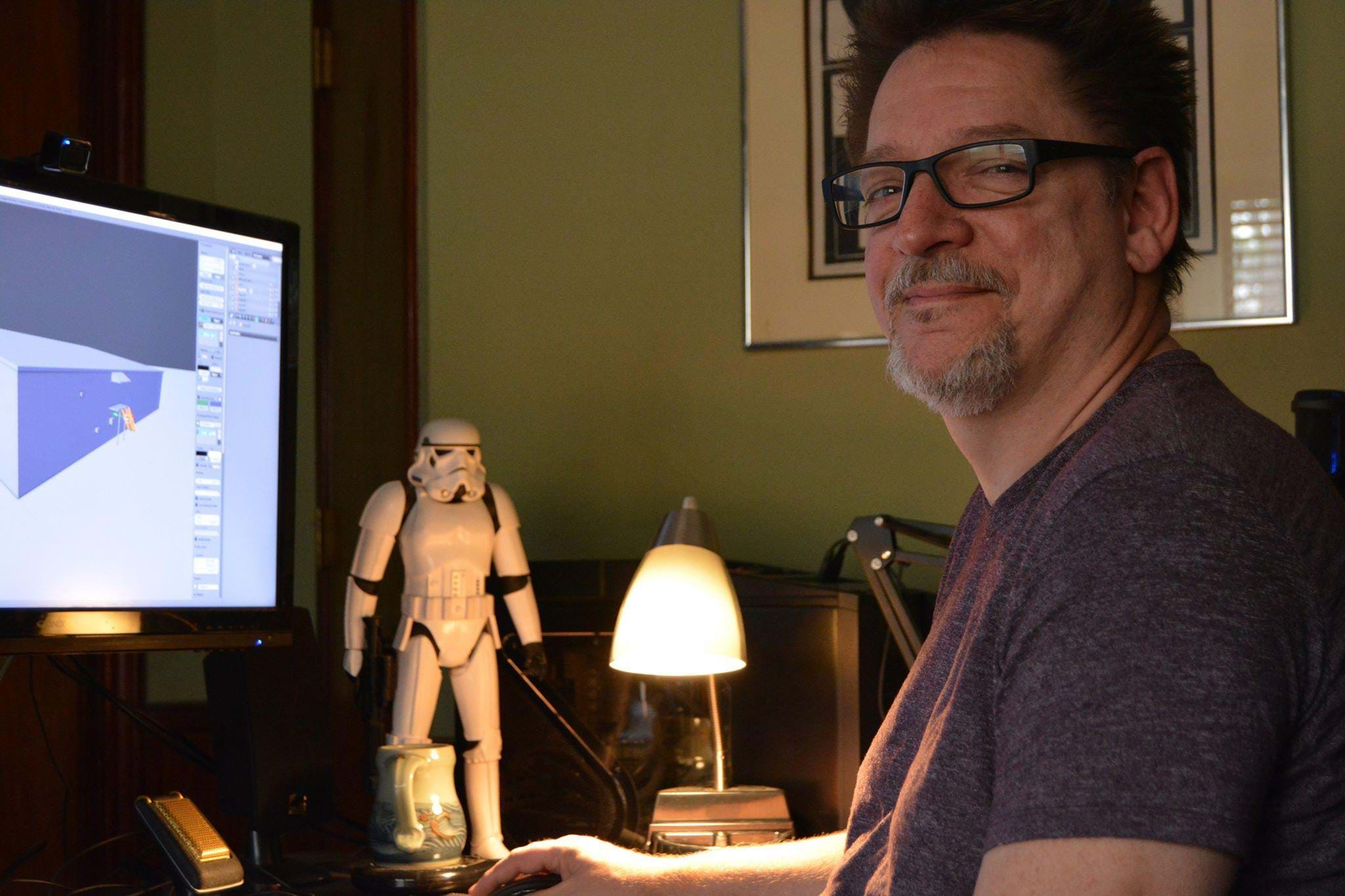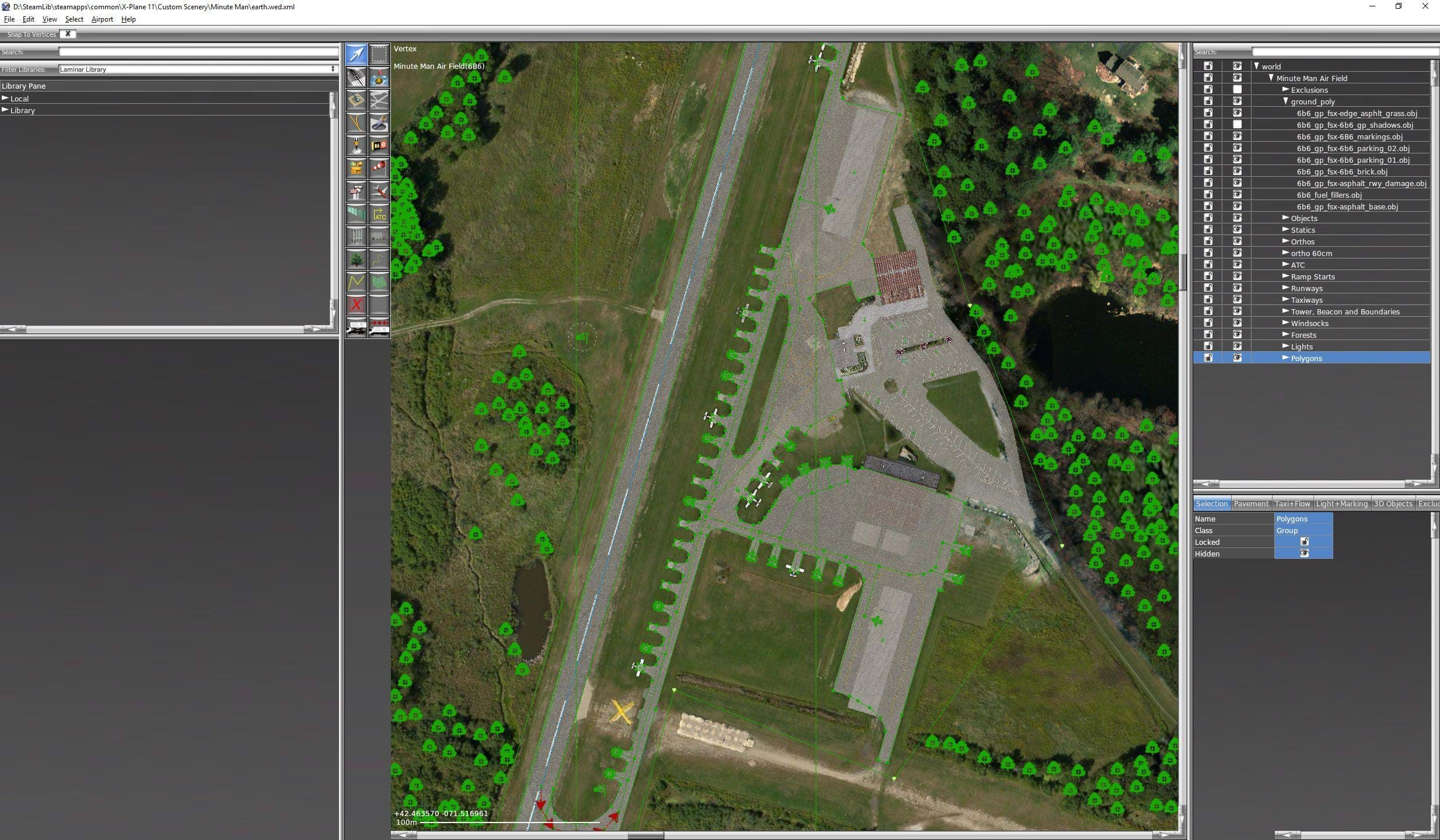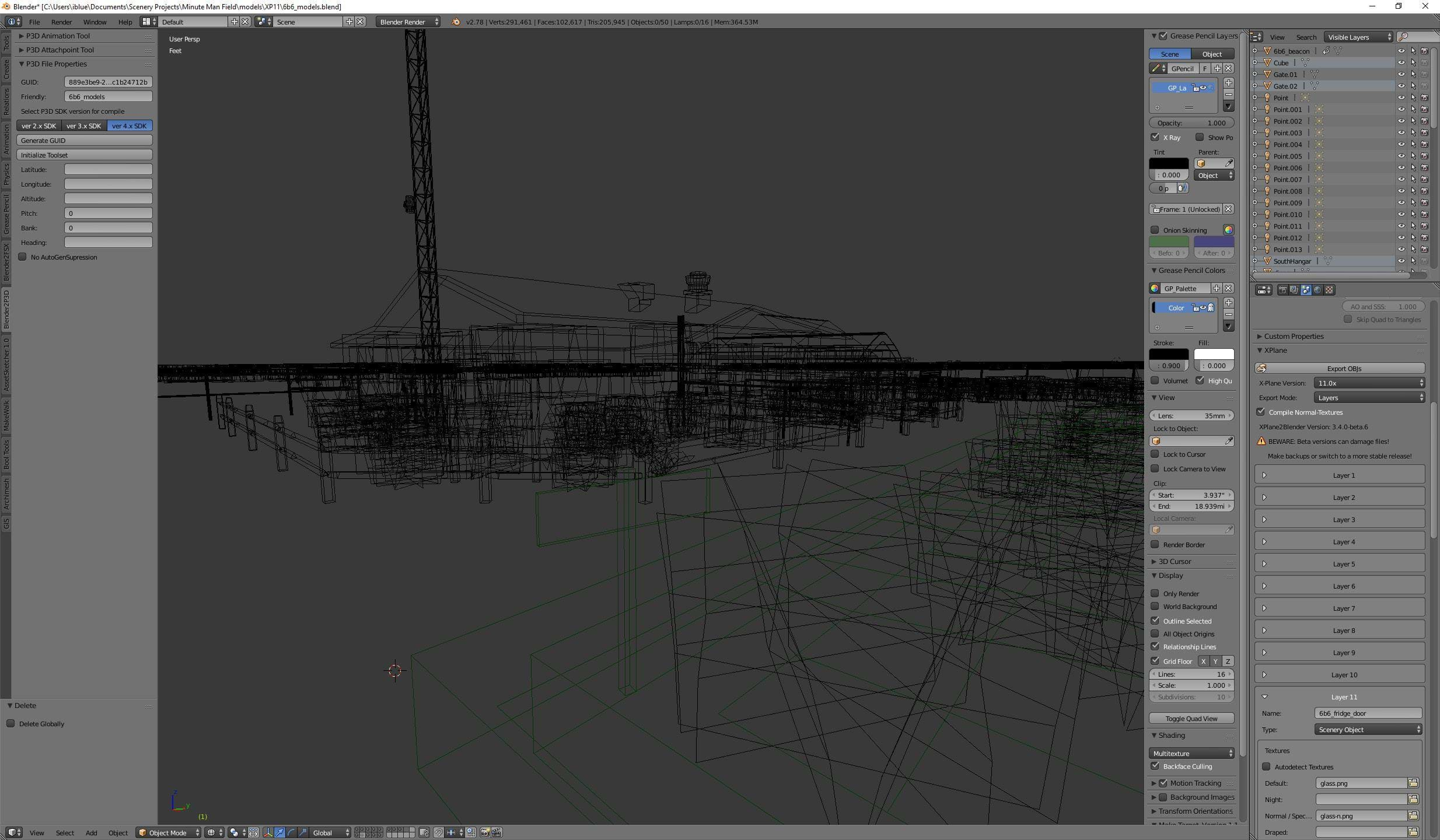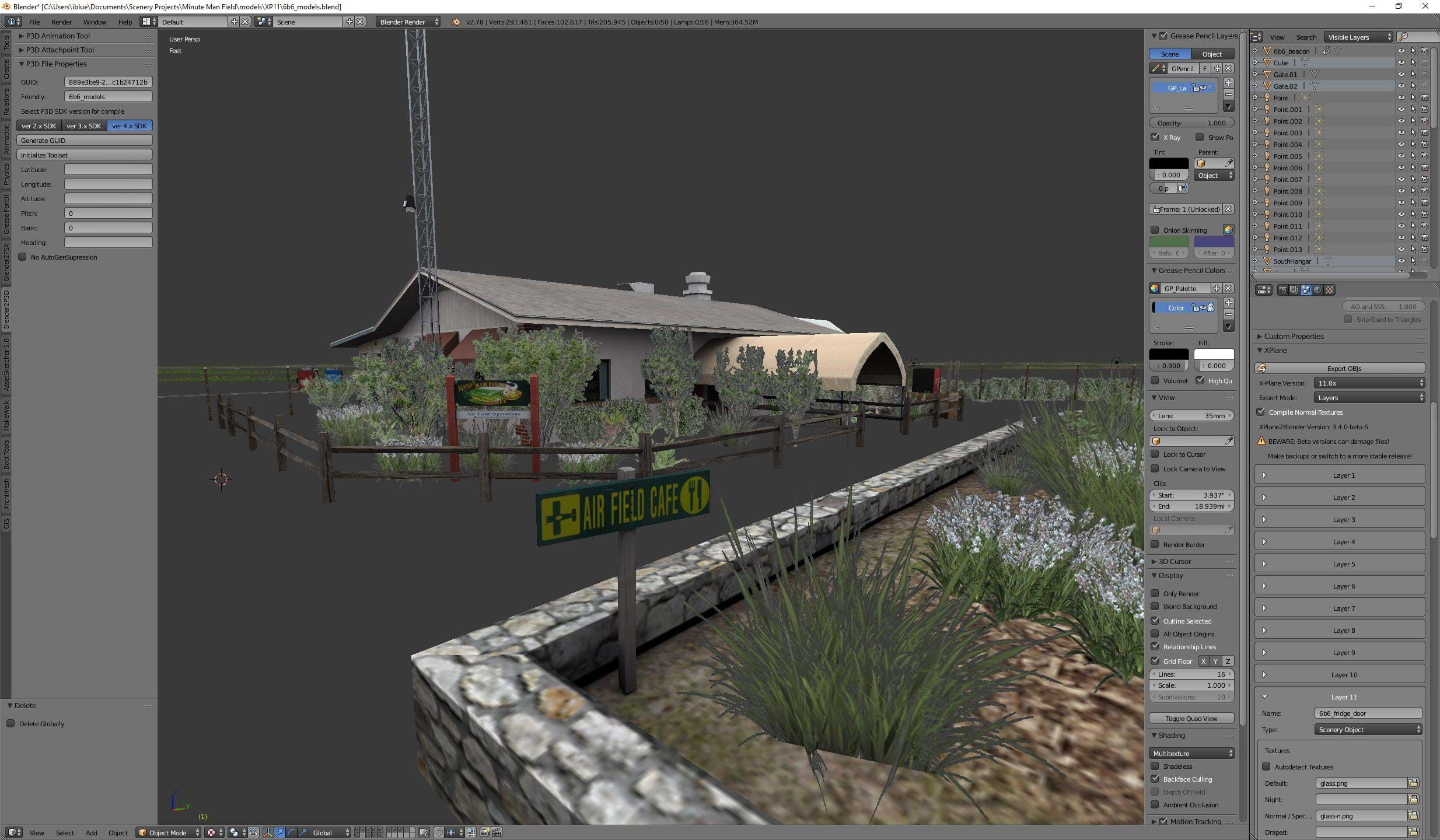Hello Bill. First of all I’d like to thank you for your time. Could you please tell us a bit more about you (note: I may edit this question/answer and use this information for the article’s introduction).
Thanks for the interview! I think I fit the “model” of a flightsimmer particularly well; just right smack in the middle of the demographic. I’m in my mid-fifties, tech-inclined, with a background in both digital design and coding. At various points in my life, I’ve been an advertising photographer, darkroom worker, Silicon Valley entrepreneur, and a web developer. In my current incarnation, I’m living out my dream of building 3D worlds that I get to share with others – and they pay me for it! I’m continually amazed.
I live in Irving, Texas (just outside Dallas) with my lovely wife, stepson, and a private zoo of 2 dogs and 3 cats.
Very recently you have started developing for X-Plane, coming from FSX and P3D. How did that happen? You didn’t just wake up one day and thought “Mmmmmm… X-Plane”, right (laughs)?
There wasn’t anything sudden about that decision, I can tell you. I’ve owned every version of X-Plane since v7, and every couple of years, I’d fire it up and evaluate it as a possible development platform for scenery. In versions 7, 8 and 9 I immediately thought “nah”. In v10, I had to stop and seriously consider it. I mean, it looked good, but it was also going to be a lot of work to learn new techniques and my sense was that the market was still pretty small compared to FSX/P3D. Then along came version 11. I believe my first words on seeing it were “whoa, hang on!” It’s just so beautiful to look at, and the graphics capabilities seem very mature at this point. Plus it caused such a ruckus, that I figured there must be a whole lot of flyers who were thinking the same as me. After some fits and starts, I finally threw my back into figuring out how to port our scenery a few weeks ago. Turns out it was much easier than I had anticipated!
How was the adaptation to developing to X-Plane for someone that came from FSX and P3D?
It was a surprisingly easy transition. There were a few new concepts and tools to wrap my head around, but the process was nowhere near as frustrating as learning FS9/FSX design. It’s like learning languages; once you know a couple, adding new ones is much simpler.
Did you find any unusual challenges or something that you could not overcome or needed to hack into?
Most of the challenges were easy to surmount with the help of the XP dev community and/or an hour or two on YouTube. The one thing that still vexes me is how to edit mesh to do things like move coastlines or other vector data. That part seems to be harder than necessary.
From your previous experiences with other sims, what is it in X-Plane that you’d like them to have, development-wise?
I love how easy to work with the actual scenery formats are – things like being able to edit an OBJ or POL file directly in a text editor. I like being able to use a couple of programs to create a whole scenery rather than having to tweak in 3 or 4 to get it right like we sometimes have to do in FSX/P3D as well.
You have released a couple of freeware scenery and you’re also migrating your other work to X-Plane. What’s next? Are you going to keep on developing for both sim platforms (FSX/P3D and X-Plane)?
FSX, P3D and XP all have their own strengths and weaknesses, but I love seeing our work in all of them. If any of the supported sims has to go at this point, I’d pick FSX just because of how old and cantankerous it is. But there’s still a market there, so we’ll probably keep turning out scenery for it for a bit longer. X-Plane is pretty easy to work with and it looks great, so I imagine it’ll be part of our plans for quite some time.
What are your expectations towards X-Plane now that you know the platform a bit more? What is it that you hope the future brings in terms of development platform and even as part of your business?
I hope we can keep on learning new ways to bring value to the XP platform. It looks like plug-in development might be up next for us, just to get new features into the sim. Business-wise, I hope that our commercial ventures into X-Plane fare well, because I’d love to keep working with it for a long, long time. I hope that doesn’t sound crass, but it’s important to keep the lights on and food on the table while we work!
I know that you are in your very early stages with X-Plane but what kind of experience have you had so far with the community around this sim? Did you feel welcome, was there some sort of “silence” towards your entry in this space? How has it been for you?
One of the most amazing things about X-Plane has been its developer community. They’ve been just amazingly welcoming and helpful. From the very first day I announced that iBlueYonder was moving to include XP, I was inundated with offers of help and encouragement. I’m just blown away.
Speaking strictly about development of scenery, what is it that you found lacking in X-Plane when compared to FSX/P3D?
At its heart, there seems to be a general lack of accommodation in XP for third-party scenery. I mean, they have a decent system for overlay scenery, but the notion that to change the mesh for a single airport I need to affect a 1-degree block of mesh is fairly primitive. I know Laminar is aware of the limitations that imposes though, and I’m sure it’ll be addressed at some point. Even in old FSX, it’s a lot easier to layer third-party mesh and scenery packages in a way that lets them all work together.
What about the opposite? What’s in X-Plane that you miss, or think is lacking in FSX/P3D?
It’s almost not fair to compare FSX to XP11, as there are 12 years of technology separating them. I do wish P3D had XP’s draped polys and general stability of ground polygons. With P3D, I do a lot of finger-crossing that my ground work will perform correctly. So far, XP is much more reliable on that count.
Knowing what you know right now, do you think it makes more sense to start developing for FSX/P3D and then port it over to X-Plane or do you think the opposite would make more sense and/or would be easier?
In my current workflow, it makes more sense to develop for FSX/P3D and then use those assets to rework a project in X-Plane. I try to avoid the word “port” because it conjures images of using some sort of translation software to shoehorn the FSX stuff into XP. What we’ve been doing is much closer to what you might do if you were developing natively for XP; we reuse the art assets, but each model has to be tweaked and adjusted, then is placed in WED. Other than sharing vertices, the work we do for the two platforms is separate.
Any tips for new developers – for both platforms?
Learn Blender! It’s a well-documented, powerful, capable 3D program that can handle just about anything you throw at it. It has exporter modules for FSX, P3D, and X-Plane 11. And it’s FREE! Seriously, what’s not to like? Sorry, but I get a bit evangelical about that program. ;)
Thank you very much once again for your time, Bill. Any last words?
Thank you! And thanks to the X-Plane community for being so open and welcoming of a new developer. I’m really stoked about the possibilities in this sim. It’s a great time to be a virtual pilot!
Learn more about iBlueYonder
You can learn more about iBlueYonder and their products at their official website.












